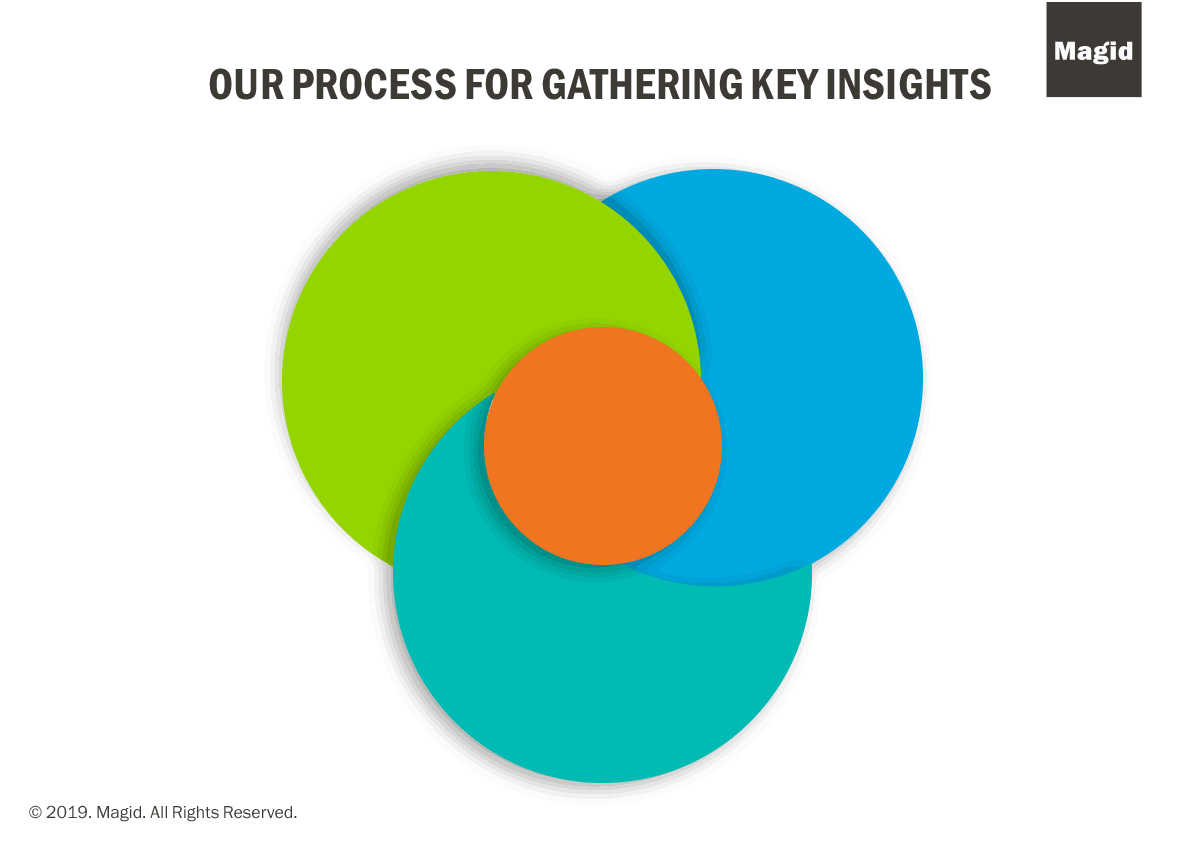4 strategies for media stations expanding to new content platforms
Every year, Magid’s local media team challenges itself to define clear perspectives on the broadcast industry that will guide our thinking and approach throughout the year. This is a comprehensive process: an internal and external review of the industry, ideation sessions with the consultants and analysts across our company, and research to understand how all of this thinking sits with consumers.
Our process this year has been particularly insightful, as we have expanded our approach to look not only at the consumers our clients want to reach, but the advertisers buying their inventory, and the employees who do the work each day. This complete view of the landscape has been a powerful tool in defining the very real challenges broadcasters face in 2019, as well as the opportunities that can make for growing businesses in the future.
We’ve been sharing our key findings from this process in a series of posts that look at the path forward for your brands and content, the keys to aligning station staffs, and how to create emotional connections between the consumer and your brand. This week we’re turning our focus to the right approach toward platform expansion.
Platform expansion isn’t where it needs to be
There is no shortage of platforms to develop a presence on, and many stations across the broadcast industry have done just that. These channels can be used to your advantage by connecting with current viewers in a new way –and reach a new audience segment that may not be engaging with you today.
Stations expanding to new platforms (OTT, social media, podcasts, apps, etc.) need to have a clear strategy defined for each, otherwise risk creating an ineffective experience for consumers and a disconnect among staffs. Whether you have an existing multi-platform strategy, you’re looking to grow and expand to new platforms, or you’re just getting started, here are four things to consider when assessing your current and future platform strategies:
-
Build a development framework to guide content decisions
Consumers make choices about content based on two core factors: the quality of the content and the friction associated with accessing that content. Successful brands will embrace this reality and build a framework to guide content development decisions that meet the target audiences’ ideals on each unique platform.
-
Ease the burden of OTT with new and existing content
Brands who find success in platform expansion also recognize that efforts to reduce friction through OTT aren’t delivering. OTT is seen as one of the least accessible platforms for local news, despite growth in usage YOY. 45% of OTT consumers stream local news weekly+ through their connected TV – but is the experience improving? OTT is supposed to reduce friction, but it’s not – despite reach, it’s still hard to access.
Many of the traditional pain points still exist – along with low awareness and discoverability, inconsistent navigation and limited programming guides – content is still primarily produced within the constraints of linear news dayparts and not for the OTT consumer. Brands can help ease the burden of OTT on staffs by repurposing existing content and putting new development opportunities through their framework to maximize resources and ROI, and reduce friction to consumers through OTT by executing a focused marketing strategy to address awareness and discoverability and investing in the technology needed to deliver a premium, intuitive user experience.
-
Reach new consumers in different ways
We need to get out of our comfort zones and look for opportunities to reach new consumers in different ways. Voice, for example, could be huge for stations looking to increase audience and drive emotional connection. The key will be to build a strategy for voice now, while it’s still being determined what role brands will play and how local stations will enter the space.
Another unexpected source for news? YouTube. If you don’t yet have a strategy for this platform, you should consider one. (We’ll tackle how to build a YouTube strategy – and why you should – in a future blog post. Stay tuned!)
-
Use your social platforms to create an emotional connection
Stations need to use social platforms to create an emotional connection beyond how viewers can connect with stories in a linear newscast. Social platforms are a great channel to emotionally engage with consumers – but they need to be the right ones, used in the right ways:
- Facebook is still the dominant platform, but the social toolkit has different use cases. Use Facebook across the spectrum, but don’t be afraid to differentiate your brands based on the value proposition of each.
- Don’t use Instagram to simply share your content. Instead, this is where you need to develop partnerships to expand your brand and create an emotional connection.
As stations develop new content strategies and expand to new platforms, it’s imperative to take a strategic, thoughtful approach. We can use these channels to our advantage by connecting with current viewers in a new way – and reach new viewers already engaging with these platforms.

